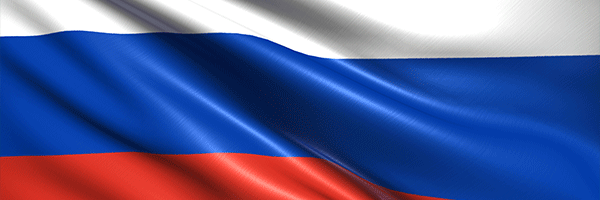Table of contents
April 2020 Update: The current compliance deadline for all medicines manufactured in Russia or imported into Russia is July 1, 2020. As of December 31, 2019, medicines that fall under the government’s HCN/7 Nosologies guidelines are expected to comply with the current serialization requirements, which comprise 4 elements: Product Code (GTIN), Serial Number, Crypto Key, and Crypto Code. Expiry Date and Batch Number are no longer required. See the latest Russia Regulatory Updates for news on Russia Track and Trace regulations.
The Russian regulation comprises a challenging array of regional and governmental organizations, systems, and designations. For companies doing business in Russia, it's essential that they know the terminology of one the world's most comprehensive—and complex—set of track and trace requirements.
12HCN/Twelve Nosologies — The name given to a class of twelve relatively rare medical conditions with costly treatments: haemophilia, cystic fibrosis, pituitary dwarfism, Gaucher disease, myeloid leukemia, multiple sclerosis, immunosuppressive therapy for organ transplant patients, Hemolytic-uremic syndrome, juvenile arthritis with systemic onset, and Mucopolysaccharidosis I, II and VI types.
Duma — The name of the lower house of the Federal Assembly of Russia, which has advisory and legislative functions.
EAC — Eurasian Conformity mark. A certification scheme to indicate that a product conforms to Eurasian Customs Union requirements. The mark must be applied to each production unit or the packaging of any goods entering or leaving the Eurasian Economic Union.
EACU — Eurasian Customs Union (EACU) — A customs union which consists of all the Member states of the Eurasian Economic Union (EAEU).
EAEU — Eurasian Economic Union (EAEU) — Includes Russia, Belarus, Armenia, Kazakhstan and Kyrgyzstan. Sometimes abbreviated to EEU. The Eurasian Union negotiates as a single entity in international trade deals such as the World Trade Organisation, instead of individual member states negotiating for themselves. Formerly known as the Eurasian Economic Community (EEC).
EEC — Eurasian Economic Commission (EEC) — The executive body of the Eurasian Economic Union responsible for implementing decisions, upholding the EAEU treaties and managing the day-to-day business of the Eurasian Economic Union. EEC was the former abbreviation for the present-day Eurasian Economic Union.
EEU — See EAEU.
FEACN — Foreign Economic Activity Commodity Nomenclature. A code mandated by the Eurasian Customs Union to define the rate of import/export duties, and any prohibitions or restrictions applied to goods entering or leaving the Eurasian Economic Union. The FEACN is a ten-digit code that will identify the group to which the item belongs, the item itself, and any sub-items. For the purposes of the pilot, only a four-digit code is being used. Classification is based on the Harmonized Commodity Description and Coding System and the Combined Nomenclature of the European Community (commonly known as HS Nomenclature).
FGIS MDC — Federal Government Information System for Monitoring of Drugs Circulation. Also known as FSIS MDC.
FSIS DCM — Federal State Information System for Drugs Circulation Monitoring. Also known as FSIS MDC.
FSIS MDC — Federal State Information System for Monitoring of Drugs Circulation. Russian government system for monitoring and tracking medicinal products available in Russia. This system will act as the data repository under the new track and trace requirements. Also translated as Federal Government Information System for Monitoring of Drugs Circulation.
FTS — Federal Tax Service. The Russian body for setting, regulating and collecting taxes. The MDLP is controlled by the FTS.
MDLP — The federal repository and tracking information system adapted by the FTS to support Russian serialization and traceability regulations.
Roszdravnadzor — Federal Service for Surveillance in Healthcare. An executive body responsible for the control and supervision of the healthcare system in Russia. Part of the Ministry of Health.
TR — Technical Regulation. In Russia, TR Certificates are issued by the government to confirm that products being imported into Russia meet the country’s technical regulations, with the aim of protecting the health and safety of patients. To bear a TR Mark, products must first pass a quality inspection. An example of a technical regulation is the Technical Regulation on Safety of Packaging (TR CU 005/2011).
USRLE — Uniform State Register of Legal Entities. This is a list of all companies registered in Russia.
VED — Vital and Essential Drugs. Also known in Russian as ZhNVLP. This is a federal list of medicines whose price is controlled by the government to ensure prevention and treatment of illnesses, including those with the highest prevalence rate in Russia.
ZhNVLP — Also known as the Vital and Essential Drugs (VED) list. This is a federal list of medicines whose price is controlled by the government to ensure prevention and treatment of illnesses, including those with the highest prevalence rate in Russia.
TraceLink will continue to update this glossary as the Russian regulatory landscape continues to evolve.



